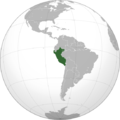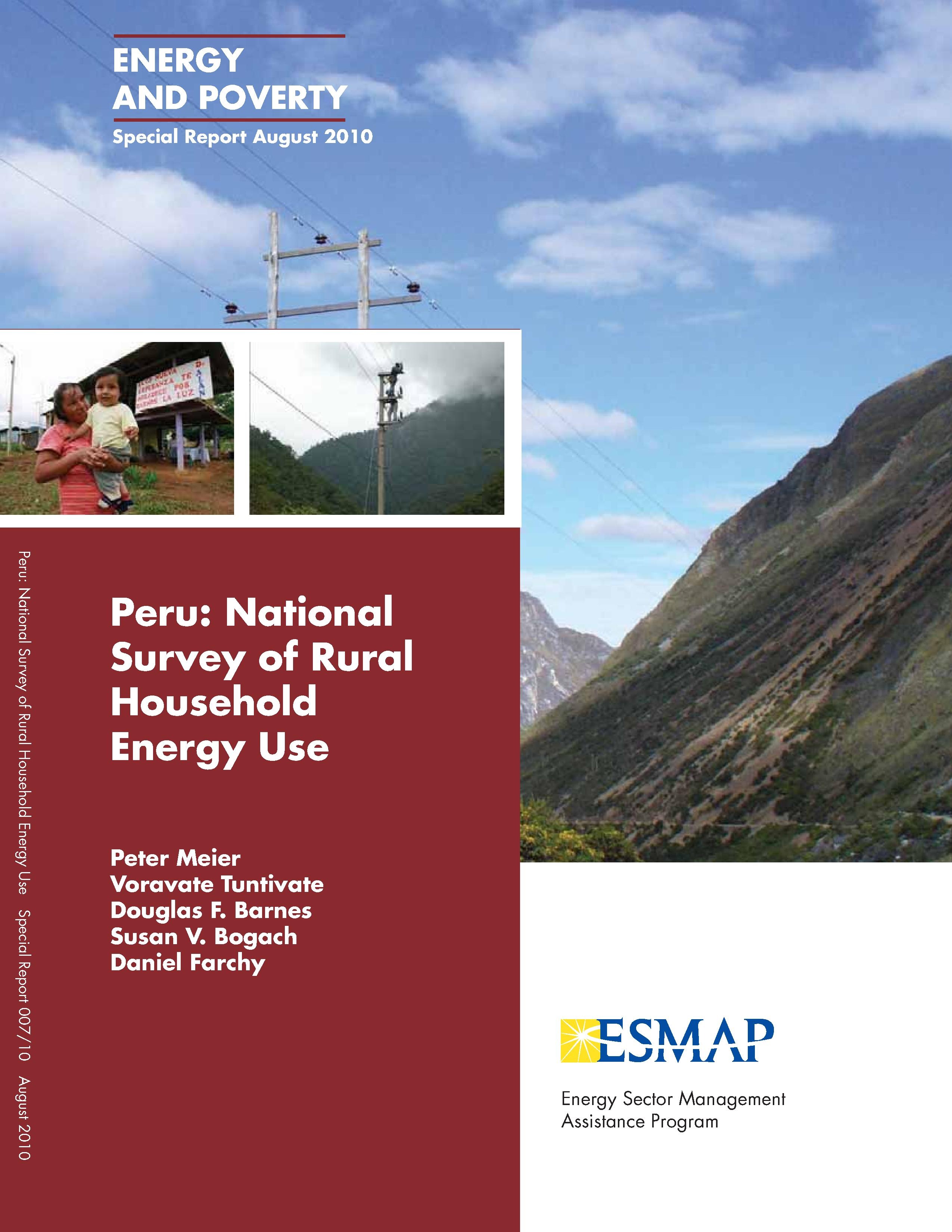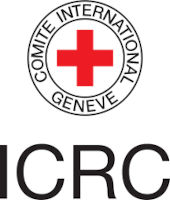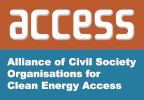Knowledge fuels change
For over a decade, Energypedia has shared free, reliable energy expertise with the world.
We’re now facing a serious funding gap.
Help keep this platform alive — your donation, big or small, truly matters!
Thank you for your support
Difference between revisions of "Peru Energy Situation"
***** (***** | *****) m |
***** (***** | *****) m |
||
| Line 12: | Line 12: | ||
= Energy Situation<ref>See also http://en.wikipedia.org/wiki/Electricity_sector_in_Peru</ref> = | = Energy Situation<ref>See also http://en.wikipedia.org/wiki/Electricity_sector_in_Peru</ref> = | ||
| + | <span class="mw-customtoggle-EnergySituation" style="font-size:small; font-weight: bold; display:inline-block; float:right; color: blue;"><span class="mw-customtoggletext">[Show/hide]</span></span> | ||
| + | <div id="mw-customcollapsible-EnergySituation" class="mw-collapsible mw-collapsed"> | ||
== Energy for Cooking Purposes<br/> == | == Energy for Cooking Purposes<br/> == | ||
| Line 34: | Line 36: | ||
[[Peru Energy Situation#toc|►Go to Top]] | [[Peru Energy Situation#toc|►Go to Top]] | ||
| − | + | </div> | |
== Household Energy Expenditure<br/> == | == Household Energy Expenditure<br/> == | ||
| + | <span class="mw-customtoggle-HouseholdEnergyExpenditure" style="font-size:small; font-weight: bold; display:inline-block; float:right; color: blue;"><span class="mw-customtoggletext">[Show/hide]</span></span> | ||
| + | <div id="mw-customcollapsible-HouseholdEnergyExpenditure" class="mw-collapsible mw-collapsed"> | ||
Although household energy expenditure varies significantly between financially better-off households and poorer households, on average the total monthly cash expenditure for all types of energy used is estimated to be 9.7% of total household cash expenditures. Nevertheless poorer households use 17.1% of their total household expenditure on energy, and the richer households use 9.7% of the total household expenditure.<ref name="Meier,2010">_</ref> | Although household energy expenditure varies significantly between financially better-off households and poorer households, on average the total monthly cash expenditure for all types of energy used is estimated to be 9.7% of total household cash expenditures. Nevertheless poorer households use 17.1% of their total household expenditure on energy, and the richer households use 9.7% of the total household expenditure.<ref name="Meier,2010">_</ref> | ||
| Line 52: | Line 56: | ||
[[Peru Energy Situation#toc|►Go to Top]] | [[Peru Energy Situation#toc|►Go to Top]] | ||
| − | + | </div> | |
= Electricity Generation<br/> = | = Electricity Generation<br/> = | ||
| + | <span class="mw-customtoggle-EnergyGeneration" style="font-size:small; font-weight: bold; display:inline-block; float:right; color: blue;"><span class="mw-customtoggletext">[Show/hide]</span></span> | ||
| + | <div id="mw-customcollapsible-EnergyGeneration" class="mw-collapsible mw-collapsed"> | ||
The gross electricity generation in Peru is currently around 30.9 TWh based on an installed generation capacity of 7.2 GW, with a maximum confirmed demand of 4.3 GW, including energy exports to neighboring countries<ref name="MEM,2010">MEM-DGE.2010. Informativo DGE No.1. Dirección general de electricidad, Ministerio de Energía y Minas, Gobierno de la Republica de Peru. 11 p</ref>.<br/> | The gross electricity generation in Peru is currently around 30.9 TWh based on an installed generation capacity of 7.2 GW, with a maximum confirmed demand of 4.3 GW, including energy exports to neighboring countries<ref name="MEM,2010">MEM-DGE.2010. Informativo DGE No.1. Dirección general de electricidad, Ministerio de Energía y Minas, Gobierno de la Republica de Peru. 11 p</ref>.<br/> | ||
| Line 92: | Line 98: | ||
[[Peru Energy Situation#toc|►Go to Top]] | [[Peru Energy Situation#toc|►Go to Top]] | ||
| − | + | </div> | |
| − | |||
= Key Problems Hampering Access to Modern Energy Services in Rural Areas<br/> = | = Key Problems Hampering Access to Modern Energy Services in Rural Areas<br/> = | ||
| − | + | <span class="mw-customtoggle-KeyProblemsHamperingAccesstoModernEnergyServicesinRuralAreas" style="font-size:small; font-weight: bold; display:inline-block; float:right; color: blue;"><span class="mw-customtoggletext">[Show/hide]</span></span> | |
| + | <div id="mw-customcollapsible-KeyProblemsHamperingAccesstoModernEnergyServicesinRuralAreas" class="mw-collapsible mw-collapsed"> | ||
== Obstacles for Grid Based Rural Electrification<br/> == | == Obstacles for Grid Based Rural Electrification<br/> == | ||
| Line 109: | Line 115: | ||
[[Peru Energy Situation#toc|►Go to Top]] | [[Peru Energy Situation#toc|►Go to Top]] | ||
| − | + | </div> | |
= Institutional Set-up and Actors in the Energy Sector<br/> = | = Institutional Set-up and Actors in the Energy Sector<br/> = | ||
| + | <span class="mw-customtoggle-InstitutionalSet-upandActorsintheEnergySector" style="font-size:small; font-weight: bold; display:inline-block; float:right; color: blue;"><span class="mw-customtoggletext">[Show/hide]</span></span> | ||
| + | <div id="mw-customcollapsible-InstitutionalSet-upandActorsintheEnergySector" class="mw-collapsible mw-collapsed"> | ||
Peru’s energy sector was privatised in the 1990´s and concessions were granted for power generation, transmission and distribution. Nevertheless, the Peruvian government still maintains an important position within the sector. While investment in generation, transmission and distribution in urban areas is predominantly private, resources for rural electrification come solely from public sources.<br/> | Peru’s energy sector was privatised in the 1990´s and concessions were granted for power generation, transmission and distribution. Nevertheless, the Peruvian government still maintains an important position within the sector. While investment in generation, transmission and distribution in urban areas is predominantly private, resources for rural electrification come solely from public sources.<br/> | ||
| Line 129: | Line 137: | ||
[[Peru Energy Situation#toc|►Go to Top]] | [[Peru Energy Situation#toc|►Go to Top]] | ||
| − | |||
== Non Governmental Service Provider in Rural Area<br/> == | == Non Governmental Service Provider in Rural Area<br/> == | ||
| Line 150: | Line 157: | ||
[[Peru Energy Situation#toc|►Go to Top]] | [[Peru Energy Situation#toc|►Go to Top]] | ||
| − | + | </div> | |
= Policy Framework<br/> = | = Policy Framework<br/> = | ||
| + | <span class="mw-customtoggle-PolicyFramework" style="font-size:small; font-weight: bold; display:inline-block; float:right; color: blue;"><span class="mw-customtoggletext">[Show/hide]</span></span> | ||
| + | <div id="mw-customcollapsible-PolicyFramework" class="mw-collapsible mw-collapsed"> | ||
== Energy Policy<br/> == | == Energy Policy<br/> == | ||
| Line 195: | Line 204: | ||
[[Peru Energy Situation#toc|►Go to Top]] | [[Peru Energy Situation#toc|►Go to Top]] | ||
| − | + | </div> | |
= Further Information<br/> = | = Further Information<br/> = | ||
| + | <span class="mw-customtoggle-FurtherInformation" style="font-size:small; font-weight: bold; display:inline-block; float:right; color: blue;"><span class="mw-customtoggletext">[Show/hide]</span></span> | ||
| + | <div id="mw-customcollapsible-FurtherInformation" class="mw-collapsible mw-collapsed"> | ||
*[https://energypedia.info/EnDev-Peru EnDev-Peru] | *[https://energypedia.info/EnDev-Peru EnDev-Peru] | ||
| Line 202: | Line 213: | ||
[[Peru Energy Situation#toc|►Go to Top]] | [[Peru Energy Situation#toc|►Go to Top]] | ||
| − | + | </div> | |
= References = | = References = | ||
| − | + | <span class="mw-customtoggle-References" style="font-size:small; font-weight: bold; display:inline-block; float:right; color: blue;"><span class="mw-customtoggletext">[Show/hide]</span></span> | |
| + | <div id="mw-customcollapsible-References" class="mw-collapsible mw-collapsed"> | ||
<references /> | <references /> | ||
[[Peru Energy Situation#toc|►Go to Top]] | [[Peru Energy Situation#toc|►Go to Top]] | ||
| + | </div> | ||
| + | [[Category:Latin_America]] | ||
| + | [[Category:CES_Country]] | ||
| + | [[Category:Peru]] | ||
| + | [[Category:Country_Energy_Situation]] | ||
[[Category:Countries]] | [[Category:Countries]] | ||
| − | |||
| − | |||
| − | |||
| − | |||
Revision as of 08:52, 2 October 2014
Capital:
Lima
Region:
Coordinates:
12.0433° S, 77.0283° W
Total Area (km²): It includes a country's total area, including areas under inland bodies of water and some coastal waterways.
XML error: Mismatched tag at line 6.
Population: It is based on the de facto definition of population, which counts all residents regardless of legal status or citizenship--except for refugees not permanently settled in the country of asylum, who are generally considered part of the population of their country of origin.
XML error: Mismatched tag at line 6. ()
Rural Population (% of total population): It refers to people living in rural areas as defined by national statistical offices. It is calculated as the difference between total population and urban population.
XML error: Mismatched tag at line 6. ()
GDP (current US$): It is the sum of gross value added by all resident producers in the economy plus any product taxes and minus any subsidies not included in the value of the products. It is calculated without making deductions for depreciation of fabricated assets or for depletion and degradation of natural resources.
XML error: Mismatched tag at line 6.2 ()
GDP Per Capita (current US$): It is gross domestic product divided by midyear population
XML error: Mismatched tag at line 6. ()
Access to Electricity (% of population): It is the percentage of population with access to electricity.
XML error: Mismatched tag at line 6.no data
Energy Imports Net (% of energy use): It is estimated as energy use less production, both measured in oil equivalents. A negative value indicates that the country is a net exporter. Energy use refers to use of primary energy before transformation to other end-use fuels, which is equal to indigenous production plus imports and stock changes, minus exports and fuels supplied to ships and aircraft engaged in international transport.
XML error: Mismatched tag at line 6.no data
Fossil Fuel Energy Consumption (% of total): It comprises coal, oil, petroleum, and natural gas products.
XML error: Mismatched tag at line 6.no data
Introduction
The Human Development Index for Peru is 0.741 that gives to the country a rank of 77. out of 186 countries[1]. Around 25.8% of the Peruvian population is poor.
Poverty is widespread especially in rural areas, 53.00% of rural population is considered poor compared with 16.6% of the urban population.[2] According to national statistics, the poorest departments are: Huancavelica (77% of the population), Apurimac (66.1%), Huánuco (58.5%), Ayacucho (55.9%) and Puno (56.0%), all of them are located in the Andean highlands (Sierra).[2]
The main reasons for poverty are: i) the limited access to natural resources such as land and water, ii) lack of productive and public infrastructure and iii) inefficient production technologies. The problems are aggravated by deforestation caused by a high consumption of firewood. In addition, poor families generally have no access to modern energy, education, health and sanitation services.[3]
In addition, the living conditions of poor families in the Andean regions are affected by natural disasters such as earthquakes, drought, and landslides, which affects the supply of water, electricity and other public services, in areas where such services are available, and hundreds of social institutions, such as health centres and schools which are seriously damage.
With regard to electricity access, the remoteness and inaccessibility of their locations, reduced power consumption, communities and households widely spread and low purchasing power of the people; limit the expansion of electricity coverage (PNER,2009). It is estimated that 45,000 small communities share these characteristics.[3]
Energy Situation[4]
[Show/hide]
Energy for Cooking Purposes
In rural areas the predominant energy source is biomass, which is used for cooking. Out of the rural Peruvian households, 84% use fuelwood for cooking, while 24% use animal dung, 11% use agriculture residue, 2% use kerosene and 14% use LPG.[5]Electricity for cooking is not used in the rural households. The high price of electricity as well as the availability of others inexpensive energy sources, are the main reasons for not used it.
Households located in the north and the central region of the Andean highlands and the Amazon region use fuelwood as their main energy source (94%, 92% and 95% of households respectively), due to its availability and its low cost.[5]
Moreover, in rural households located in the central and south coastal region LPG is used the most cooking energy fuels (63% and 53% of the households, respectively). On the other hand, in these regional states rural families use firewood for cooking (74% and 68% of households, respectively).[5] The use of LPG is associated with households with better incomes since LPG is more expensive. These households also have better road infrastructure, which is required to distribute LPG to end users, thus they are not considered "poor households".
Households which use fuelwood, animal dung and agriculture residue as main energy source, predominantly use three fire stone as cooking stoves.
Since the weather is cold and windy in the Peruvian Andes, women generally cook in kitchens with small windows and almost no air circulation, causing a serious and constant threat for the health of their families. Very often the level of indoor air contamination recommended by WHO (World Health Organization) is highly exceeded because of the inefficient burning of biomass. Hence, respiratory infections are quite common among poor and rural people.
Studies carried out by the Pan American Health Organization in Peruvian districts, have shown direct correlations between respiratory infections and the years of exposure to smoke from traditional fires. Usually women and young children are affected the most. They spend a minimum five hours daily exposed to smoke in the kitchen, which has a serious impact on their health. The older the women the more they have been exposed to this indoor air pollution and the more they suffer from respiratory illnesses such as bronchitis and cough.
Further, it was proved that the risk of chronic bronchitis is connected with the exposure to smoke from biomass burning in childhood. Especially infants under 5 years are affected by acute respiratory infections (ARI), which is responsible for almost 20% of all deaths in this age group.
The WHO published the IAP National Burden of Disease Estimates in 2007. To compare, globally in 2000, indoor air pollution was responsible for more than 1.5 million deaths and 2.7% of the global burden of disease (GBD). For Bolivia the GBD is 1.9%, Guatemala 3.1%, Colombia 0.4% and Ecuador 0.1%. In Peru the percentage of national burden of disease attributable to biomass fuel use is 0.9 %.
Fuel from biomass is scarce and firewood is becoming a commodity. There is a growing energy crisis, most of all in areas over 3.800 meters above sea level, where the key source of energy for families is wood. Instead they have to use dry grass, dung and yareta, an almost extinguished plant that needs 850 years to grow. Biomass resources are exploited with consequences like erosion and the decrease of plant species.
Energy for social infrastructure resembles the families’ situation, both for cooking and for hot water availability. In 90 % of the health care centre in the Andean area of Arequipa there exists a lack of warm water, which is required for cleaning patient care instruments and material handling.
Energy for Lighting and other Purposes
As mentioned before, grid electricity is used by 39% of he rural households. A tiny fraction of households, 0.6% (13,100 households) have generators, and 0.8% (16,700 households) has solar home systems (SHS).[5]
Small generators and SHS are commonly used in households without access to grid electricity. The household in-grid connected, which own small generators or SHS, use them due to the lack of electricity service reliability. Particularly SHS is used for lighting and communications (radio and TV).[5]
Car batteries are commonly used as off-grid electricity sources, especially in the Coastal region of Peru, where households have more income and car battery recharging is relative easy due to the presence of good roads. It is estimated that 18% (240,000) of off-grid rural household uses it for lighting and running TV`s.[5]
Nevertheless, in rural households without electricity the most common source of energy for lighting comes from kerosene (80% of rural households) and candles (65% of rural households).[5]
Rural households in-grid connected areas consume less than 30 kWh per month (70% of households), and between 21% and 39% of their total electricity consumption is used for lighting. The remaining electricity consumption is due to the use of domestic appliances such as TV, irons and others. Less than 1% of these households own appliances such as domestic water pumps, electric pump irrigation systems or any other devices which are directly used for income-generating activities.[5]
Domestic small appliances such as radios and flashlights are powered by dry cells (74% of rural households) in both types of households, with or without access to grid electricity.[5]
Although household energy expenditure varies significantly between financially better-off households and poorer households, on average the total monthly cash expenditure for all types of energy uses is estimated to be 9.7%of the total household cash expenditures. Energy expenditures in the Andean region, in which the poorest country´s departments are located, their energy expenditure accounts for 10% to 12% of the total household expenditure in contrast with the Coastal region, which accounts for 8% to 10% percent of total household expenditure.[5]
Household Energy Expenditure
[Show/hide]
Although household energy expenditure varies significantly between financially better-off households and poorer households, on average the total monthly cash expenditure for all types of energy used is estimated to be 9.7% of total household cash expenditures. Nevertheless poorer households use 17.1% of their total household expenditure on energy, and the richer households use 9.7% of the total household expenditure.[5]
On the other hand there are differences among regions. Energy expenditures in the Andean region, in which the poorest communities are located, accounts for 10 to 12 percent of the total household expenditure, in contrast with households located in the Coastal region where energy expenditure accounts 8 to 10 percent of total household expenditure.[5]
As mentioned before, rural households use fuelwood extensively regardless of their income situation.81% of the rural households are in the upper expenditure quantile compared to 87% that are in the lower expenditure quantile. Particularly in Perú, not only household expenditure on LPG and electricity rise with income, but also cash expenditures on fuelwood. The poorest households expend approximately 13.63 Soles on buying fuelwood contrary to the richest households which expend approximately 35.98 Soles monthly approximately.[5]
The off-grid use of electricity (generators, car batteries, and others) in the Peruvian rural area is expensive. Although this electricity is of lesser quantity than that of the available from the grid, it has a much higher cost per energy unity. Thus, these households have the potential willingness and ability to pay for modern energy sources or better quality electricity service.[5]
Rural Household Energy Use
Electricity Generation
[Show/hide]
The gross electricity generation in Peru is currently around 30.9 TWh based on an installed generation capacity of 7.2 GW, with a maximum confirmed demand of 4.3 GW, including energy exports to neighboring countries[6].
Power is generated by thermal plants using gas or oil (56%) and hydroelectric plants (44%), with a negligible share of other renewable sources. Even though installed capacity is evenly divided between hydroelectricity and conventional thermal energy, 62.9% of Peru’s total electricity generation generally comes from hydroelectric facilities. Conventional thermal plants generally operate only during peak load periods or when weather factors dampen hydroelectric output, thus generating 2.8% of the total electricity generation. A recent investment by the Peruvian Government in gas power plants has resulted in the generation of 31% of total energy generation. Finally a minimal 3% of total energy production is generated by carbon power plants.[6]
Peru is extracting petrolium, but it is not sufficient to cover domestic demand. The electricity sector of Peru is quite dynamic with an estimated 4.8% increase in generation between 1995 and 2009 and demand growth of 8% annually between 2004 and 2009.[7]This increase is mainly due to the existing positive conditions for thermal generation through the use of natural gas in new plants and also to an increase in hydroelectric generation due to the availability of hydrological resources in the existing hydroelectric facilities.[6]
Peru has an electrification rate of 83.55% (6,394,049 households) on the national level. Notwithstanding, 38.32% (979,476 households) of the rural population (around 4 million people) does not have access to electricity, this is one of the lowest rural electrification rates in Latin America. The access to grid electricity varies across the different regions, the Andean North and Amazon region have the lowest rural electrification rate (22% and 18% respectively) compared to Coastal Central and South regions which are more densely populated and also more easily accessible (60% and 71%, respectively).[5]
The service quality in the electricity sector is relatively good. In rural areas 80% of the households have 24 hour service throughout the year (every month)1. One of the main problems in the electricity grid are outages due to lack of network management and capacity as well as electricity losses. Distribution and transmission losses amount to 8% of total production.[8]
Power Generation
Power in Peru is generated by private and state owned companies. In 2008, 14 companies generated electricity for the market four of them accounted for 72.5% of the total capacity:[9]
- EDEGEL S.A.A.: 1,574MW
- Electroperú S.A. (ELP): 1,032 MW
- Energía del Sur S.A. (ENERSUR): 725 MW
- EGENOR: 522 MW
Electroperú dominates hydroelectric production, with 28% of the total, while EDEGEL leads thermal generation with 18% of the total.
Private companies dominate the generation sector. In terms of participation, state companies hold 30% of generation capacity, with the remaining 70% in private hands. The single largest generating company in Peru is Electroperú, majority-owned by the Peruvian government, which operates the Mantaro hydroelectricity complex, the largest hydroelectric facility in the country.
In total, 41 power stations with a combined capacity of more than 20 MW are operating on the electric market, out of them 21 are hydropower plants, and the remaining 20 are thermal power plants including 6 gas power plants.[9]
Transmission
The National Electric Interconnected System (SEIN) is formed by transmission lines of 220 kV, 138 kV and 60 kV rated voltage.
In Peru, 100% of the transmission activities are in private hands, but regulated by the government.
In 2008, there were 7 purely transmission companies that participated in electricity transmission in Peru: Red de Energía del Perú S.A. (REPSA), with 63% of the transmission lines; and Consorcio Energético Huancavelica (CONENHUA), Consorcio Transmantaro S.A. (S.A. Transmantaro), Eteselva S.R.L, Interconexión Eléctrica ISA Perú (ISAPERU) and Red Eléctrica del Sur.S.A. (REDESUR), ETENORTE with the remaining 37% of the lines.[9]
Peru has two main power transmission grids, one covering the north and centre parts of the country, the other serving the south. An interconnector runs between the two along the Pacific coast.
The largest transmission company in Peru is the Colombia-based ISA Group, which controls over half of the transmission grid in the country through its subsidiaries Red de Energia del Peru and Interconexion Electrica (ISA). Peruvian law ensures that all generating and distributing companies have fair and non-discriminatory access to the national transmission grid.
Distribution
In 2008, the electricity was commercialized by 18 distribution companies, of which 56% are stated owned companies and the remaining private owned.The companies that stood out for their sales to end-consumers were: Edelnor (22.28%), Luz del Sur (17.43%), HIDRADINA (11.03%) and ELECTROCENTRO (10.09%).[9]
Public distribution companies supply electricity to 56% of the existing clients, with the remaining 44% in hands of the private utilities. However, in terms of electricity distributed, private companies have the lead with 71% of the total as opposed to 29% for the public ones.[9]
Key Problems Hampering Access to Modern Energy Services in Rural Areas
[Show/hide]
Obstacles for Grid Based Rural Electrification
Several factors handicap rural electrification in Peru:
a) Insufficient financial resources for investments in grid extension and installation of minigrids. Private companies generally don’t invest in this sector as cost of providing access are high due to remoteness of the sites, dispersed nature of the populations and difficulty of the terrain. Local communities don’t dispose of sufficient proper financial resources to make infrastructure investments in their community. Consequently, only the central government and NGOs are left for this kind of investment. NGOs are specialized on small systems whereas the MEM is involved in middle size systems.
b) Difficulty to operate mini-grid profitability due to the low purchasing power and the low energy demand of rural clients.
Obstacles for Off-grid Energy Technologies and Services
a) Insufficient financial resources to carry out dissemination programs for off-grid technologies
b) Insufficient availability of micro-finance schemes for energy technologies in rural areas. Large parts of the country have almost no access to institutional micro-finance services and must rely largely on moneylenders, suppliers, family and friends for short-term seasonal loans. There are no secure liquid savings options available to these households, which would enable them to build assets over time. Existing micro-finance institutions often have a narrow credit product line, limited experience in rural markets and a lack of access to best practice information and technical tools.
c) Lack of a marketing and maintenance structure for energy technology devices in rural areas. Almost all retailers are established in cities with no outlets in rural communities. Thus, clients have to travel to cities to purchase energy devices and for repair orders, which is difficult for most rural families. Establish rural outlets are considered not to be profitable due to the high costs for transportation and mobilization, the dispersed nature of the populations and the low income and low demand of the local population.
Institutional Set-up and Actors in the Energy Sector
[Show/hide]
Peru’s energy sector was privatised in the 1990´s and concessions were granted for power generation, transmission and distribution. Nevertheless, the Peruvian government still maintains an important position within the sector. While investment in generation, transmission and distribution in urban areas is predominantly private, resources for rural electrification come solely from public sources.
Public Institutions
The National Electricity Office (DGE - Dirección General de la Electricidad), under the Ministry of Energy and Mines (MEM), is in charge of setting electricity policies and regulations and of granting concessions. It is also responsible for elaborating generation and transmission expansion plans and has to approve the relevant procedures for the operation of the electricity system.
The Energy and Mining Investment Supervisory Body (OSINERGMIN - Organismo Supervisor de Inversión en Energía y Minería), is in charge of enforcing compliance with the Electricity Concessions Law (LCE)of 1992 and is also in charge of ensuring the electricity public service. OSINERG is as well the body responsible for enforcing the fiscal obligations of the license holders as established by the law and its regulation. Finally, it is responsible for monitoring compliance of the System Economic Operation Committees (COES) functions and for determining biannually the percentages of market participation by the companies.
In 2000, OSINERG was merged with the Electricity Tariffs Commission (CTE), currently known as Adjunct Office for Tariff Regulation (GART). Together, they are in charge of fixing generation, transmission and distribution tariffs and the tariff adjustment conditions for the end consumers. They also determine the tariffs for transport and distribution of gas by pipeline.
As for rural electrification, the National Rural Electrification Office (DGER) is in charge of the National Rural Electrification Plan (PNER), which is framed under the policy guidelines set by the Ministry of Energy and Mines. DGER is in charge of the execution and coordination of projects in rural areas and regions of extreme poverty.
Finally, the National Institute for Defense of Competition and the Protection of Intellectual Property (INDECOPI) is in charge of monitoring compliance with the Anti-monopoly and Anti-oligopoly Law of 1997.
On May 3, 2007, a regulation that consolidated the role of the Electric Infrastructure Management Enterprise (ADINELSA) as a leader in rural electrification, was approved by Supreme Decree No. 025-2007-EM. ADINELSA manages the electric service provided by Solar Home Systems. The company installs and maintains the equipment, while the user pays the "rural rate" for use, an amount that is subsidized by the state. The systems are not owned by the resident, as ADINELSA retains ownership over them.
Non Governmental Service Provider in Rural Area
- Heifer-Perú: since 1997 this nonprofit organization had disseminated 2,929 ICS in the Deparments of Piura, Lambayaque, Cusco y Apurimac.
- ADRA-Peru among its activities is the construction or house improvement through so called “Hogares Saludables” project in which ICS had been disseminated.
- Misioneros de Belen Imensee-Proyecto solar en Perú “Taller Inti”: the rationale for this nonprofit organization is training and promotion in the various solar technologies to people in rural areas of Cuzco (Andean highlands) such as cookers and solar ovens, thermo solar water, solar dryers, solar panels, among others. The training center is located in the capital of the province of Espinar, where solar radiation reaches 2'200 [kWh/m2 year]
- Soluciones prácticas (ITDG): international technical cooperation agency with Latin American headquarters in Lima, among its projects are: i) installation of micro-hydro power, micro wind power, pico hydro power and photovoltaic systems ii) training and technical advice on renewable energy, iii) research and adaptation of bioenergy technologies (biofuels, biogas) at small scale in remote areas, and iv) local funding.
Others Organizations or Institutions Involved in this Sector
- APEGER: Peruvian Association of Renewable Energy.
- Asociacion peruana de energia solar (APES): nonprofit organization whose purpose is to promote, disseminate, research and train on renewable energy usage. This association is integrated by consultants, private or governmental institutions and organizations who carried out training, research and projects on renewable energy (solar, wind, hydro and biomass) as well as efficient energy usage.
- Global Environment Facility (GEF) granted the Peruvian government 5 USD million for financing of small hydropower project. Each project should be a PCH, with a total installed capacity of not less than 500 KW or greater than 10 MW, including a transmission line power supply to the point of delivery to the SEIN or regional system.
- Rural electrification project by World Bank. The project will provide electricity to 100,250 rural households trough the extension of the grid and 39,300 trough the installation of SHS in isolated rural areas Additionally the project support the involvement of small and medium enterprises in the electricity sector, promotion of small hydropower development, estimation of the market potential for natural gas, etc. Total amount: almost 100 USD million.
- Agenda for development a new sustainable energy matrix. This program is finance by Interamerican Development Bank, its main activities are: to carry out technical diagnostics in the energy sector, public consultations on sector politics, application of the Strategic environmental assessment and strengthening management practices associated with use of fiscal resources.
- EUROSOLAR 2010. Project finance by European Union, whose goal is to install hybrid (solar and wind) systems, in 130 communities not grid connected, located in the Coastal, Andean highlands and Amazonia regions.
Policy Framework
[Show/hide]
Energy Policy
The electricity sector is regulated by the Law of electricity concessions (Ley de Concensiones electricas, No 25844). Trough this law it was possible to separate the generation, transmission and distribution activities in the electrical sector was carried out. and provided opportunities for private investors to participate in these activities.
In this law were established the conditions under which these activities (generation, transmission and distribution) need a concession granted by the Peruvian Government.
Others complementary laws are:
- Law on the Regulatory Framework on Investment in Public Services (Law No 27332-Ley Marco de los Organismos Reguladores de la Inversion Privada en los Servicios Publicos) in which the conditions were set for further investment into electricity generation and transmission.
- Law to ensure efficient development of electricity generation (Ley para asegurar el desarrollo eficiente de la generacion electrica-No 28832)
- Hydrocarbons Law (Ley organic de hidrocarburos-No 26221) in which the elaboration of the energy sector policies is assigned to the MEM.
Beside these laws, additional regulations were adopted, such as:
- Cogeneration regulation (D.S.No.037-2006-EM)
- Efficient development of electricity generation regulation (D.S.No.053-2007)
The Peruvian government also issued the Reference Plan of Electricity from 2006-2015 (Plan referencial de electricidad 2006-2015) which outlines the development of the electricity sector until 2015. The main objectives are the promotion of private investment in the energy sector, monitoring of the energy sector and providing subsidies to rural electrification projects[10].
A new national energy policy for 2010-2040 has been elaborated for the Peruvian Government and is currently being discussed by the civil society, stakeholders of the electricity market and others. According to the national energy policy proposal, one of the main objectives is to have a diversified energy mix, with emphasis on renewable energy and energy efficiency.[11]
During 2008 the Peruvian´s Government approved a law that promotes electricity generation from renewable energy sources (Ley para la Promocion de la Inversion para la Generacion de Electricidad con Energias Renovables). This law and its regulation provides some incentives to private generators such as: a fixed guarantee price establish through public auctions, supply energy contracts up 20 years, priority in the energy dispatch and electricity network access. As a result, the first bidding to supply 500 MW, from renewable sources, to the Interconnected Electricity National System (Sistema Electrico Interconectado Nacional-SEIN) was held in early 2010. Only 411 MW were adjudicated to 26 projects: 3 wind power generation projects (142 MW), 4 solar power generation projects (80 MW), 2 biomass projects (27 MW) and 17 small hydropower generation projects (161 MW), all of them will supply electricity to the SIEN in 2012.[2]
Rural Energy Policy
After the power sector reform in the early 1990s, rural electrification in Peru has been limited to direct investment by the central government, without any additional funds from communities, regional governments or service providers. One important issue deterring electricity distribution companies from investing in rural electrification is the fact that they hold concession areas concentrated in small areas around urban centre and are only under the obligation to meet service requests within 100 meters of the existing network.
In order to expand coverage, the Government of Peru is implementing the “Plan Nacional de Electrificación Rural 2011-2020”whose objective is to achieve a national electrification rate of 88.4% by the year 2020. Up to 2008 US $ 925 million had been invested and 6.7 million people had been benefited.[12]
The plan is backed by the Rural Electrification Law (Ley de electrificacion rural y de localidades aisladas de fronteras-No.27744), which states that electrification of rural areas, and isolated localities in the country are a national need and are publicly required.
This law establish a fund for rural electrification, which is administered by the General Directorate of Rural Electrification (Direccion General de Electrificacion Rural), which is in charge of planning, designing and constructing the rural electricity systems trough the coordination of such activities with local and regional governments, electricity enterprises. The Law also enforces the use of renewable sources for rural electrification such as: wind, geothermal, solar, water and biomass sources.
The government has been spending an average of US$ 40-50 ( € 27-34) million per year in the last ten years for electrification. These investments were carried out through social funds (e.g. FONCODES – Cooperation Fund for Social Development) and, to a larger extent, by the Executive Office for Projects (DEP), a division of the Ministry of Energy and Mines (MEM). The EMPRESA DE ADMINISTRACION DE INFRASTRUCTURA ELECTRICA S.A. (ADINELSA) is the main implementing company in the field of rural electrification. It is a state-owned company, which administers publicly funded rural electrification activities outside the concession areas in rural areas.
Once they are finalized, the rural electricity systems are handed over for operation either to state-owned distribution companies or to a specially created state-owned asset-holding company that manages the systems under operation contracts with state-owned companies, or municipalities. In addition to funds for projects the government created an Electricity Social Compensation Fund (FOSE).
This Fund established a cross-subsidy system among consumer tariffs that benefits users with monthly consumption below 100 kWh through fixed and proportional discounts. The fixed discount applies to consumers between 30 and 100 kWh and the proportional discount is targeted to those with consumptions below 30 kWh.
The amount of the discounts is financed through a surcharge on the tariff paid by regulated consumers with monthly consumptions above 100 kWh. The number of households that benefit from this scheme is over 2.4 million (out of the 3.6 million grid-connected households at national level).
In July 2004, the FOSE covered up to 60% of the bill in the National Interconnected System (SEIN) and in the isolated systems for the users with consumption below 30 kWh, including as well a special focus by geographic location (rural-urban).
For SHS the Supervisory Agency for Investment in Energy and Mining (OSINERGMIN) established a fixed rate for photovoltaics.This rate applies to electric generation between 50 and 320 Wp. However, about 80% of the users of this system receive state-subsidized rates, which have substantially improved the sustainability of the projects, as they are managed by governmental, non-governmental and private entities.
Further Information
[Show/hide]
- EnDev-Peru
- Analysis of the potential to foster electricity and lighting access in the Andean region, thanks to carbon mechanism - Microsol and Rexel Foundation, study led from June 2013 to May 2014. The study provides an overview of access to electricity and lighting in Colombia, Ecuador, Peru, Bolivia and Chile.
References
[Show/hide]
- ↑ UNDP.2010.Human Development Report.
- ↑ 2.0 2.1 2.2 INEI.2010.Peru en cifras. Instituto Nacional de estadisticas e informatica. Republica del Peru. Acceso online (29.11.10) http://www.inei.gob.pe/ Cite error: Invalid
<ref>tag; name "INEI,2010" defined multiple times with different content Cite error: Invalid<ref>tag; name "INEI,2010" defined multiple times with different content - ↑ 3.0 3.1 PNUD.2010. Informe de desarrollo humano: Peru. Programa de las Naciones Unidas para el Desarrollo. Lima, Perú. 207 p. Cite error: Invalid
<ref>tag; name "PNUD,2010" defined multiple times with different content - ↑ See also http://en.wikipedia.org/wiki/Electricity_sector_in_Peru
- ↑ 5.00 5.01 5.02 5.03 5.04 5.05 5.06 5.07 5.08 5.09 5.10 5.11 5.12 5.13 5.14 5.15 _ Cite error: Invalid
<ref>tag; name "Meier,2010" defined multiple times with different content Cite error: Invalid<ref>tag; name "Meier,2010" defined multiple times with different content - ↑ 6.0 6.1 6.2 MEM-DGE.2010. Informativo DGE No.1. Dirección general de electricidad, Ministerio de Energía y Minas, Gobierno de la Republica de Peru. 11 p Cite error: Invalid
<ref>tag; name "MEM,2010" defined multiple times with different content Cite error: Invalid<ref>tag; name "MEM,2010" defined multiple times with different content - ↑ BID. 2010. Perú:Programa para el desarrollo de una nueva matriz energetica sostenible:propuesta de préstamo. Banco Interamericano de Desarrollo. Lima, Perú. 27 p.
- ↑ GTZ.2009. Energy-policy framework conditions for electricity markets and renewable energies:16 country analyses. Energy and Transport Department, GTZ. Eschborn, Germany. 27 p.
- ↑ 9.0 9.1 9.2 9.3 9.4 MEM.2009.Peru sector electrico 2009:documento promotor. Ministerio de Energia y Minas, Republica de Peru. Lima, Peru. 40 p. Cite error: Invalid
<ref>tag; name "MEM,2009" defined multiple times with different content Cite error: Invalid<ref>tag; name "MEM,2009" defined multiple times with different content Cite error: Invalid<ref>tag; name "MEM,2009" defined multiple times with different content Cite error: Invalid<ref>tag; name "MEM,2009" defined multiple times with different content - ↑ GTZ.2009.Energy-policy framework conditions for electricity markets and renewable energies:16 country analyses. Energy and Transport Department, GTZ. Eschborn, Germany. 27 p.
- ↑ MEM.2010.Propuesta de politica energetica de estado Peru 2010-2040. MEM, Gobierno del Perú. 9 p.
- ↑ MEM. 2009. Plan Nacional de Electrificacion Rural, periodo 2009-2018. Ministerio de Energia y Minas, Gobierno de la Republica del Perú. Lima, Peru, 270 p.






















